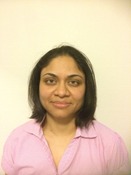Program Information
Change in Retinal Arteriole Diameter with Visual Simulation
N Tellapragada1*, S Burns2 , (1) ,,,(2) Indiana University, Bloomington, INDIANA
Presentations
SU-F-E-21 (Sunday, July 31, 2016) 3:00 PM - 6:00 PM Room: Exhibit Hall
Purpose:
Neural activity and blood flow in the brain are tightly coupled. This coupling allows the brain to respond to periods of increased neural activity with increased blood flow. This coupling is known as neurovascular coupling. Many vascular based imaging techniques such as Functional MRI scans provide maps of signals of brain activity but they are limited by the resolution of fMRI to a few mm. The fMRI signal is indirect because the scanner is not tracking the neural activity directly but are measuring the changes in the blood oxygen levels. Since the retina and optic tract are part of the central nerves system and they can be measured optically it should be possible to make precise measurements of the retinal vasculature of the human retina and its response to changing stimulation levels.
Methods:
In this study we used an adaptive optics scanning laser ophthalmoscope (AOSLO) with multiply scattered light to measure the change in arteriolar diameter when the retina was stimulated with flickering light. We hypothesized that we could use this technique to measure both arterial dilation and time course. We used information from the reflectance of the vessel to measure total vessel diameter.
Results:
Images were acquired at approximately 30 Hz and averaged over 3.3 second periods. Retinal arteries were measured in five observers before, during, and after presentation of a large flickering stimulus. There was a 6-10% dilation of the blood vessels during the flicker. The Vascular dilation occurred within seconds of flickering onset and constricted again following the end of flicker stimulation.
Conclusion:
This work shows that with modern retinal imaging methods it is possible to make precise measures of vascular constriction and its time course in response to changing tissue demand.
Contact Email:

